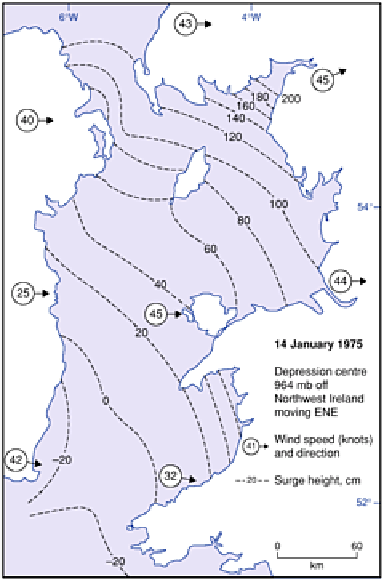Environmental Engineering Reference
In-Depth Information
geomorphic impacts (Figure 17.3). The annual average extent of surges over mean sea
level is about +0·6 m in Britain and up to +1·5 m on tropical cyclone coasts. Hurricane
Hugo created a storm surge of +11 m on the South Carolina coast of the United States in
1989. Distinctions between
micro-
,
meso-
and
macro
tidal ranges (see below and Chapter
11) demonstrate the persistent impact of tidal waves in varying the amplitude of the surf
zone. Tidal processes dominate coasts, with macrotidal ranges over 4 m, and breaking
waves truly dominate only in the microtidal environment.
Tidal ebb and flow stimulate
tidal currents
with substantial fluxes of water, energy
and sediment around the coastline (Figure 17.4). Water density differences based on
salinity, and the extent of water body mixing or separation, vary the patterns of
circulating currents. Current velocities vary with the size of tidal passes and the
frequency of tidal inundation. Tidal wave velocity in open
Figure 17.3
A storm surge in the Irish Sea raised by an
intense depression in January 1975.
Source: After Carter (1993).
waters is less than 0·05 m s
−1
but can reach 0·3-3 m s
−1
through confined passes. Semi-
diurnal tides move approximately twice as much water in one day as diurnal tides at
about twice the diurnal velocity. The duration of intertidal exposure varies by the same
token and, with it, the opportunity for and nature of drying out, weathering and biological

